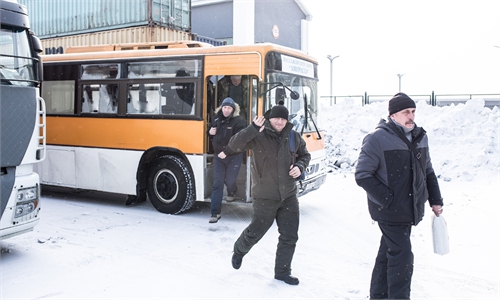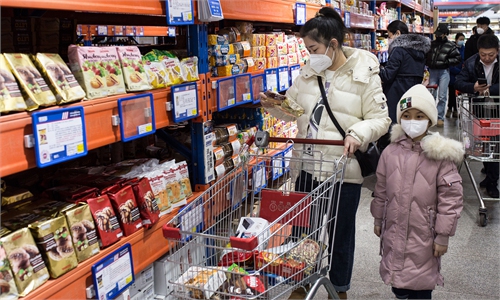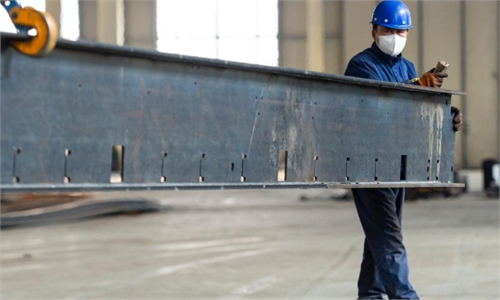ARTS / CULTURE & LEISURE
China's Russia-border Heihe becomes popular destination by utilizing its location, winter resources
Northern scenery
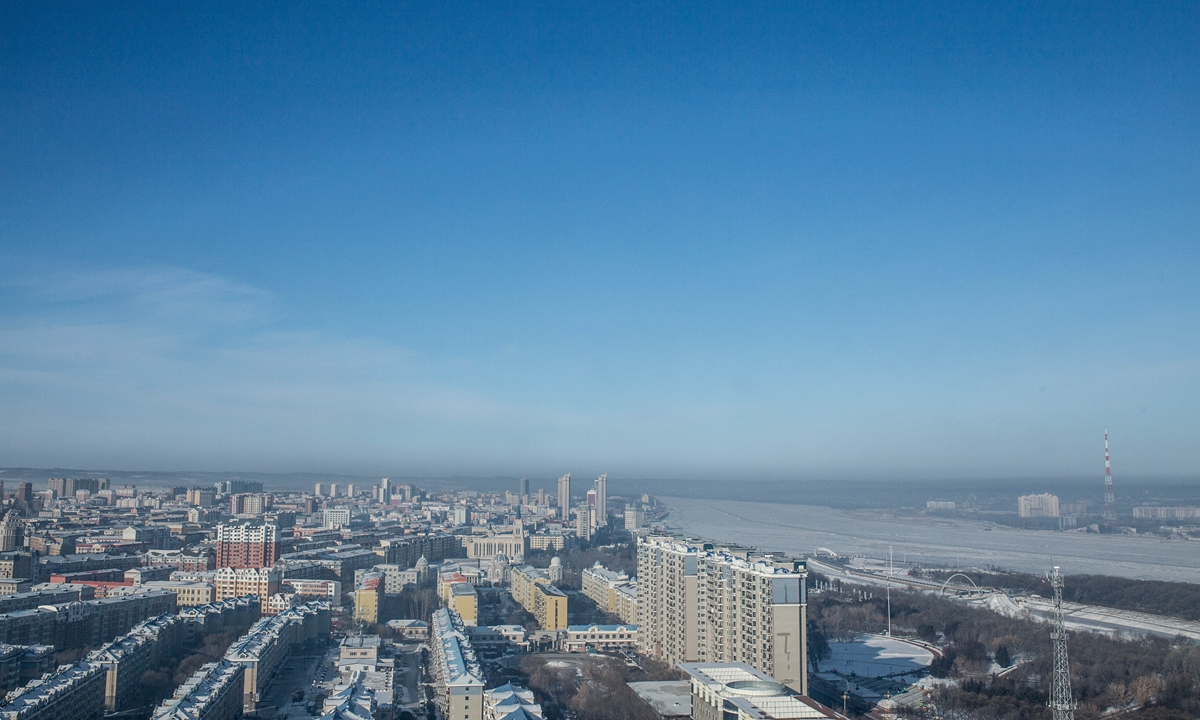
The aerial view of Heihe, Northeast China's Heilongjiang Province Photo: Shan Jie/GT
It is already mid-February, more than two weeks after the Spring Festival. In Beijing and many other Chinese cities, temperatures are rising and people are welcoming the warm spring.
However, in Heihe, Northeast China's Heilongjiang Province, the world is still all white with temperatures as low as -30 C, a cold that most people never experienced in their life.
Meanwhile, the atmosphere in the northmost city near the China-Russia border is not cold at all, on the contrary, this winter, Heihe has been regaining its vitality after three years of silence due to the lockup caused by the COVID-19 epidemic.
After China optimized its management toward the virus, Heihe has become a popular destination thanks to its unique border scenery and winter resources: Local people are expecting more tourists to flock back during the upcoming holidays.
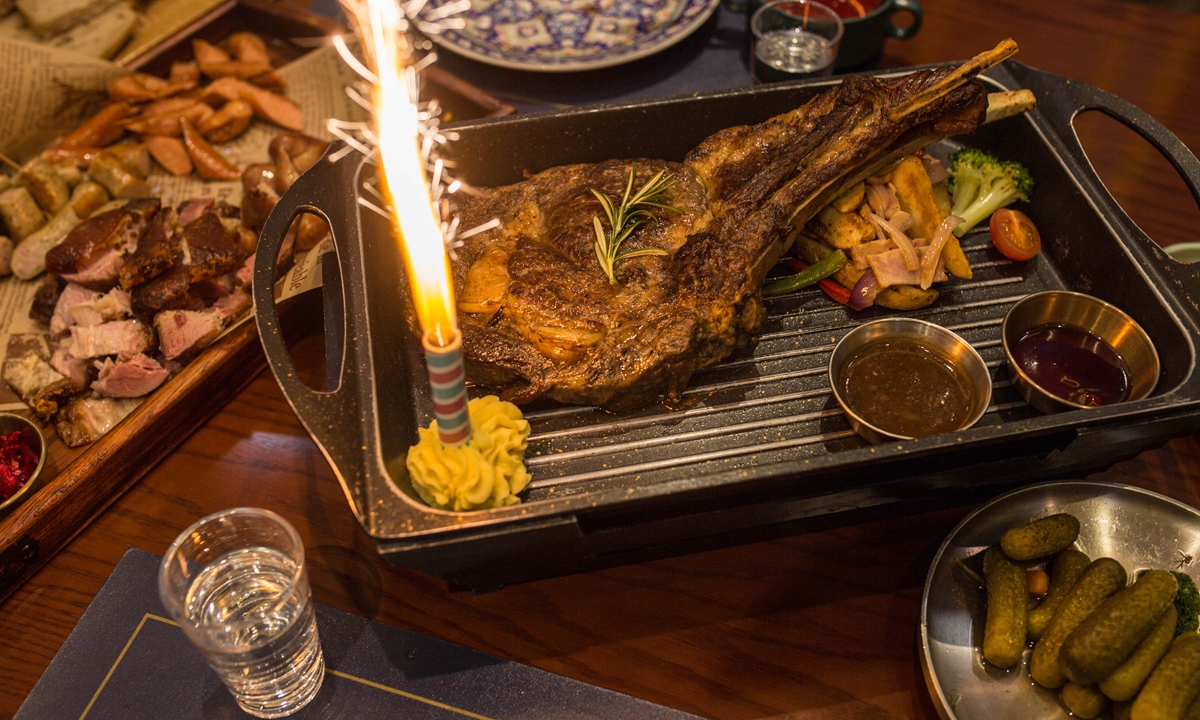
The Tomahawk steak in Lena's Restaurant of Heihe, Northwest China's Heilongjiang Province. Photo: Shan Jie/GT
Mixed flavor
It was only 6 pm, Lena's Restaurant in the downtown of Heihe was already very busy. The chef was grilling huge Russian shashliks, while the waiters were running among the guests. The fiery atmosphere was in stark contrast to the outdoor freezing temperature of -20 C.
Heihe and Russia's Blagoveshchensk face each other across the Heilongjiang River, which is also known as Amur River. Before the epidemic, people-to-people exchanges between the two countries were extremely frequent and convenient. The cultures mixed here, including culinary traditions.
The city used to be very popular with Russian and Chinese tourists.
"We have 'improved' the Russian cuisine to make our dishes more acceptable to Chinese guests," said Zhang Wei, also known as Lena, owner of the most famous restaurant in Heihe.
"For our Russian friends, we have another menu, with some typical Russian food on it," she told the Global Times that this is also her secret to keep the restaurant at the top of Heihe's establishments according to both Russian and Chinese customers.
"At present, we have restored business operations to 75 percent," Zhang said with a relaxed smile. "We can't wait for summer time, when tourists will flock to this northern border city."
For people living in Heihe and nearby regions, Russian food, especially snacks, have already been a part of their daily life.
Hearing that the border was about to reopen, Jiang Ying and her friends drove four hours from the city of Wudalianchi to Heihe to have a look.
The Global Times reporters met Jiang in Epinduo, the biggest supermarket featuring imported goods from Russia, Belarus, South Korea and other countries, in Heihe. Her two trolleys were full of cans of honey, bags of cookies, sweets and salt and she kept piling up more products while talking to the reporters.
"I love shopping here. The commodities are cheap and good in quality, but I had not been to Heihe for almost three years due to the epidemic," Jiang said.
"Now the risk of the epidemic has finally faded, we are all very happy and expect to travel across the river soon."
Sun Ying also drove two hours to Hehei with her 8-year-old twin daughters.
"The girls love the Russian candy so much. I also recommend the milk powder from Belarus," she told the Global Times.
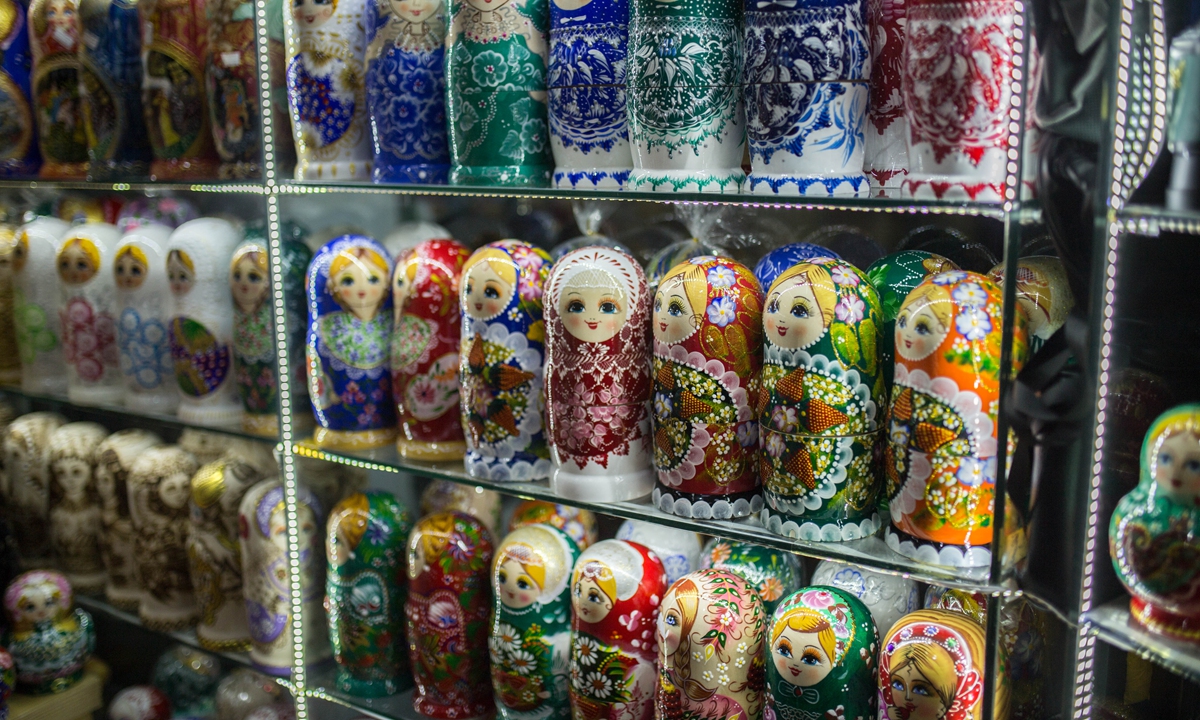
Matryoshka dolls sold in Epinduo supermarket in Heihe are popular souvenirs for Chinese tourists. Photo: Shan Jie/GT
Winter test
In Heihe, it is easy to see many previously unseen car models driving on the road. Those might be the new types of cars that are yet to be tested and released in the market.
Located at a high-latitude, Heihe has become the choice of many car companies to conduct resistance tests due to its unique geographical and climatic conditions.
In China, more than 80 percent of test vehicles choose Hehei for their trials, according to local government. Every winter, thousands of vehicles gather here to conduct harsh cold tests in Heihe, media reported.
The county launched an annual "car test festival" in winter to welcome companies, enthusiasts and tourists.
As of February 9, a total of 1,171 test vehicles from 93 car companies had come to Heihe in the 2022-23 test season, according to the Hehei publicity department.
So far, Heihe has set up eight cold-area car testing enterprises, 16 testing bases, and 24 exclusive testing bases.
Heihe is improving its infrastructure and services and accelerating the construction of digital projects to promote the digital upgrade of the cold-area car testing industry, media reported.
A reception service center has been set up to provide car enterprises with business consultation, personnel registration, green pass issuance, 24-hour rescue, hotel booking, catering recommendation, tourism guidance and other services.
Data shows that during the annual car testing season, Heihe's vehicle testing industry will generate more than 400 million yuan ($ 59.2 million) in revenue.

